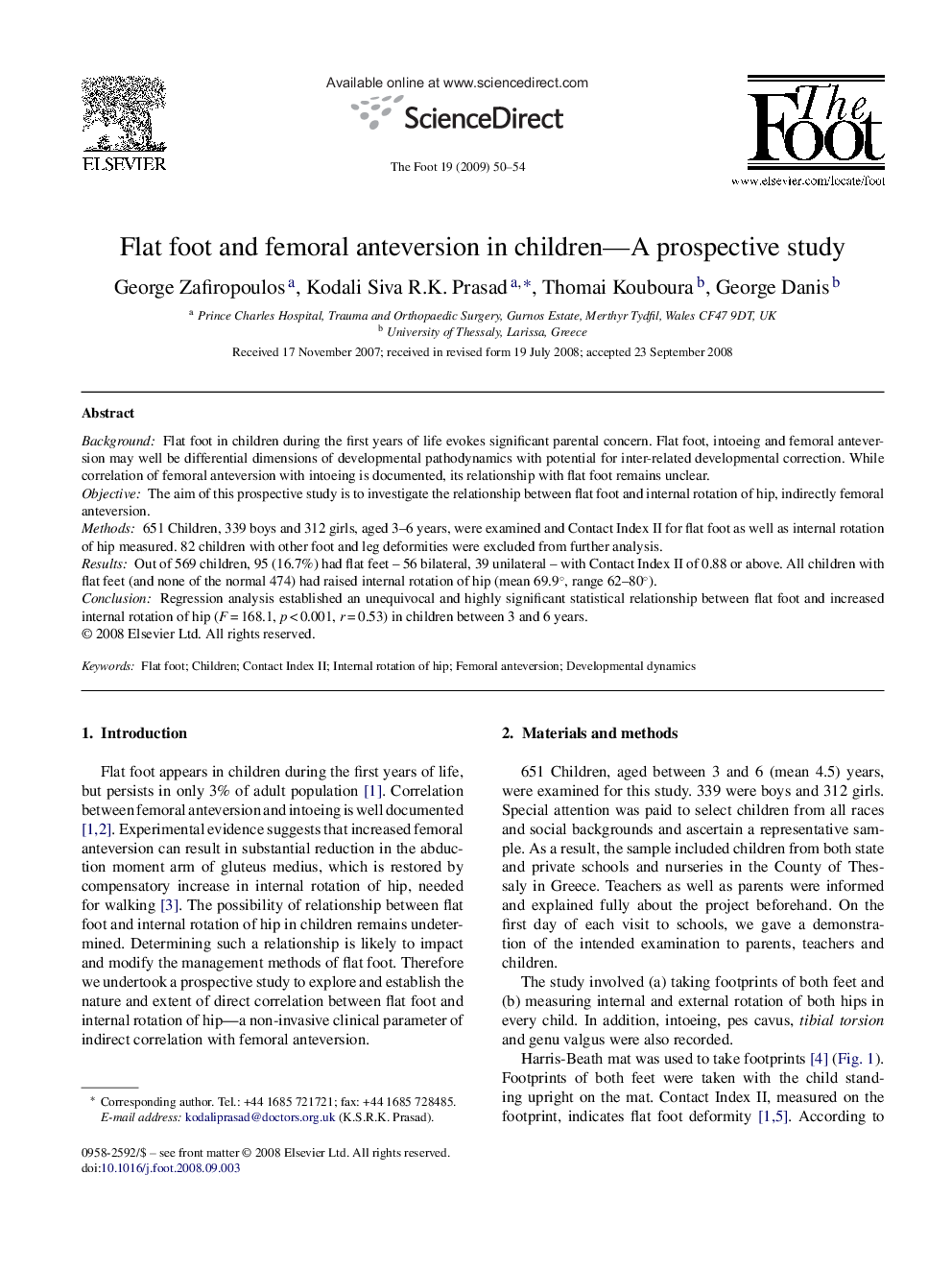| Article ID | Journal | Published Year | Pages | File Type |
|---|---|---|---|---|
| 2711425 | The Foot | 2009 | 5 Pages |
BackgroundFlat foot in children during the first years of life evokes significant parental concern. Flat foot, intoeing and femoral anteversion may well be differential dimensions of developmental pathodynamics with potential for inter-related developmental correction. While correlation of femoral anteversion with intoeing is documented, its relationship with flat foot remains unclear.ObjectiveThe aim of this prospective study is to investigate the relationship between flat foot and internal rotation of hip, indirectly femoral anteversion.Methods651 Children, 339 boys and 312 girls, aged 3–6 years, were examined and Contact Index II for flat foot as well as internal rotation of hip measured. 82 children with other foot and leg deformities were excluded from further analysis.ResultsOut of 569 children, 95 (16.7%) had flat feet – 56 bilateral, 39 unilateral – with Contact Index II of 0.88 or above. All children with flat feet (and none of the normal 474) had raised internal rotation of hip (mean 69.9°, range 62–80°).ConclusionRegression analysis established an unequivocal and highly significant statistical relationship between flat foot and increased internal rotation of hip (F = 168.1, p < 0.001, r = 0.53) in children between 3 and 6 years.
